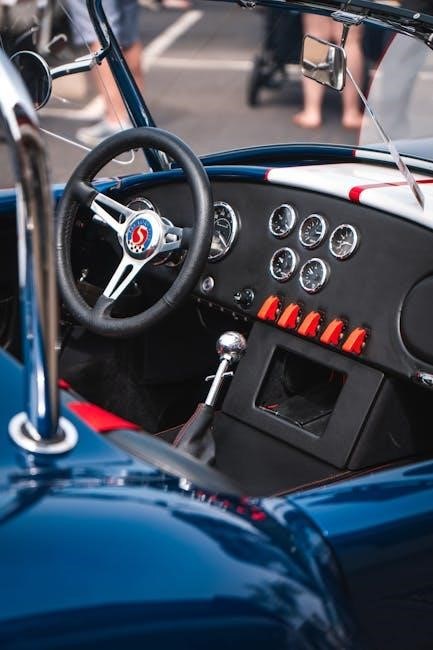Manual Stick Shift Driving Lessons: A Comprehensive Guide
This comprehensive guide offers insights into mastering manual transmissions. Whether you’re a beginner or looking to refine your skills‚ our lessons provide a pathway to confidently driving stick shift vehicles. Unlock a world of driving experiences!
Understanding the Basics of Manual Transmission
Understanding manual transmission involves coordinating the clutch‚ gas‚ and brake pedals for smooth gear changes. The shifter‚ typically located in the center‚ allows the driver to select the desired gear. The clutch pedal disengages the engine from the transmission‚ allowing gear changes without grinding. The interplay between these controls is crucial for safe and efficient driving. Mastering this skill enhances driver control.
A manual transmission requires more experience than an automatic. It’s essential to start slowly and methodically. Remember the pedal layout: clutch‚ brake‚ accelerator (C-B-A). Coordinate your hands and feet‚ and practice makes perfect.
Benefits of Learning to Drive Stick Shift
Learning to drive a manual transmission offers several advantages. It gives you greater control over the vehicle‚ enhancing your connection to the driving experience. You’ll improve your understanding of how cars work‚ leading to a deeper appreciation for automotive mechanics. This knowledge can make you a better‚ more attentive driver overall.
Many sports cars and high-performance vehicles are exclusively available with manual transmissions. Learning stick shift opens up a whole new world of driving possibilities. Moreover‚ some drivers find manual transmissions provide better fuel economy compared to automatics. Embrace the challenge and enjoy the rewards!
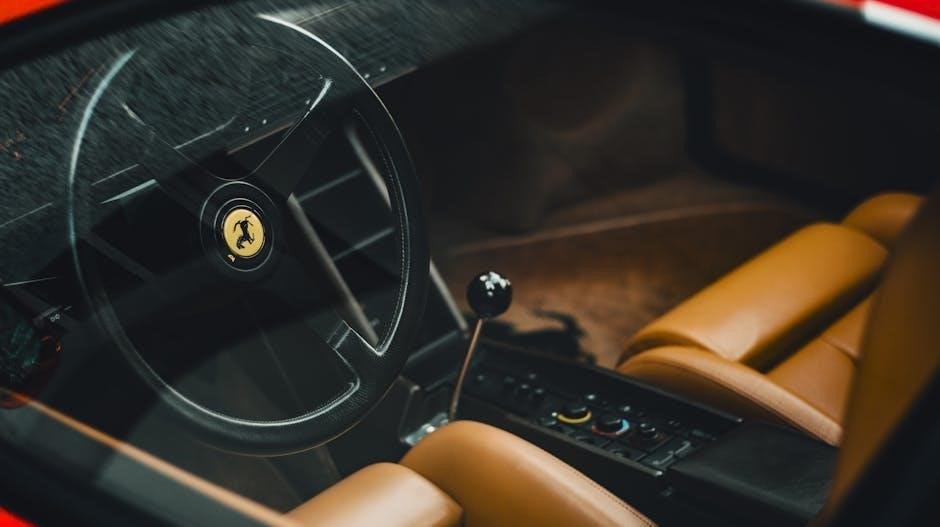
Finding a Qualified Instructor
Locating a skilled instructor is paramount for effective learning. Look for experience‚ patience‚ and a structured curriculum. A good instructor will tailor lessons to your needs and goals.
Options for Stick Shift Driving Lessons: Driving Schools and Private Instructors
When seeking manual transmission instruction‚ consider both driving schools and private instructors. Driving schools often provide structured curricula and certified instructors‚ ensuring a comprehensive learning experience. They may offer access to vehicles and controlled environments for practice.
Private instructors offer personalized attention and flexible scheduling. Look for instructors with extensive experience and positive reviews. Consider whether you prefer learning in your own vehicle or one provided by the instructor. Evaluate costs‚ lesson duration‚ and the instructor’s teaching style to find the best fit for your needs.
SHIFTR and Stick Shift Driving Academy
SHIFTR stands out as a premier choice for stick shift lessons‚ providing access to skilled instructors. They tailor lessons to individual goals‚ whether you’re a novice or seeking to refresh your skills. Prices begin at $129 per hour‚ offering professional-quality instruction to master manual transmissions safely and correctly.
The Stick Shift Driving Academy offers lessons across the United States‚ connecting students with experienced manual transmission instructors. With a focus on patient and effective teaching‚ they aim to help students master the art of driving stick shift vehicles.
MTT : Manual Transmission Teachers
Manual Transmission Teachers (MTT) offers a simple and affordable way to connect with instructors specializing in manual transmission driving. MTT provides a network of instructors across the US. They are dedicated to helping individuals learn how to drive a manual transmission vehicle.
MTT is committed to making manual driving lessons accessible and convenient. They emphasize affordability and ease of use; This allows students to find qualified instructors in their local area. This ensures a supportive and effective learning experience for aspiring manual drivers everywhere.
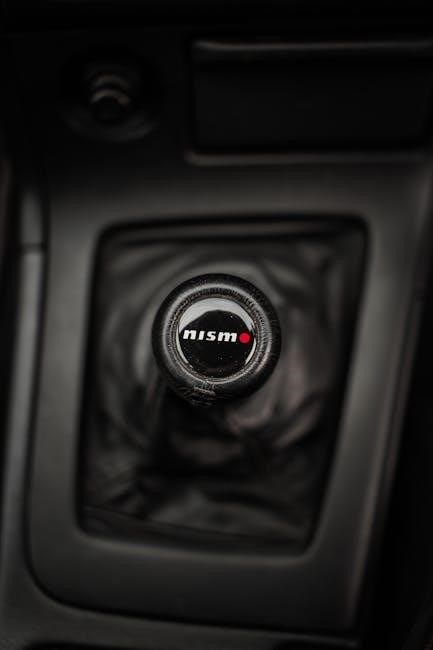
Essential Skills Covered in Manual Driving Lessons
Our lessons cover clutch control‚ gear shifting‚ and hill starts. Mastering these skills is crucial for safe and confident manual driving. Enhance your driving abilities with expert guidance.
Mastering Clutch Control: The Friction Point
Clutch control is fundamental for manual transmission mastery‚ involving coordinating the clutch‚ gas‚ and brake pedals. Identifying the “friction point‚” where the engine and transmission begin to engage‚ is crucial. This point allows smooth transitions and prevents stalling. Recognizing the engine’s sound is essential for finding the friction zone.
Practice slowly releasing the clutch while applying light pressure to the accelerator. This balance prevents stalling and enables smooth starts. Consistent practice develops muscle memory‚ enhancing your ability to find and control the friction point. Mastering this enhances control and makes driving efficient.
Smooth Gear Shifting Techniques
Achieving smooth gear shifts requires precise coordination of the clutch‚ accelerator‚ and gear lever. Begin by fully depressing the clutch pedal. Next‚ swiftly move the gear lever to the desired gear position. Simultaneously‚ gently release the clutch while applying light pressure to the accelerator pedal.
This coordinated action ensures a seamless transition between gears. Listen to the engine’s RPMs to determine optimal shifting points‚ typically between 2500 and 3000 RPMs. Practice this technique repeatedly to develop muscle memory. Smooth shifts minimize jerking. This technique improves driving experience and reduces wear on the transmission.
Starting on a Hill: Preventing Rollback
Starting on an incline requires a specific technique to prevent rollback. First‚ engage the parking brake for added safety. Then‚ depress the clutch and shift into first gear. Gradually increase the engine’s RPMs to the friction point‚ where the engine speed begins to drop.
Simultaneously‚ slowly release the parking brake while applying more pressure to the accelerator. This coordinated release will allow a smooth uphill start without rolling backward. Practice this method in a safe and controlled environment to develop confidence. Mastering this skill is essential for safe and confident driving on hilly terrain.
Advanced Driving Techniques
Elevate your manual driving skills with advanced techniques. Learn downshifting for engine braking and‚ optionally‚ explore heel-toe shifting. Master these skills for enhanced control and a more engaging driving experience on any road.
Downshifting for Engine Braking
Downshifting for engine braking is a crucial skill for manual transmission drivers. Instead of relying solely on the brakes‚ downshifting uses the engine’s resistance to slow the vehicle. This technique is beneficial in various situations‚ such as descending steep hills or approaching a stop. To downshift effectively‚ match the engine speed to the lower gear‚ ensuring a smooth transition.
Proper downshifting reduces wear on your brake pads‚ extends their lifespan‚ and provides greater control‚ especially in adverse weather conditions. Mastering this skill enhances safety and offers a more connected feel to the driving experience. It’s a valuable asset for any manual driver.
Heel-Toe Shifting (Optional)
Heel-toe shifting is an advanced technique that allows drivers to downshift and brake simultaneously while maintaining smooth control. Primarily used in performance driving‚ it involves using the “heel” of your right foot to blip the throttle while the “toe” applies the brake; This synchronizes engine speed with the lower gear‚ preventing abrupt jolts or loss of traction.
While not essential for everyday driving‚ mastering heel-toe shifting offers enhanced control during spirited driving or on the racetrack. It requires practice and coordination but provides a rewarding experience. Learning this technique demonstrates a deeper understanding of manual transmission dynamics and car control‚ making it a valuable addition to any enthusiast’s skill set.
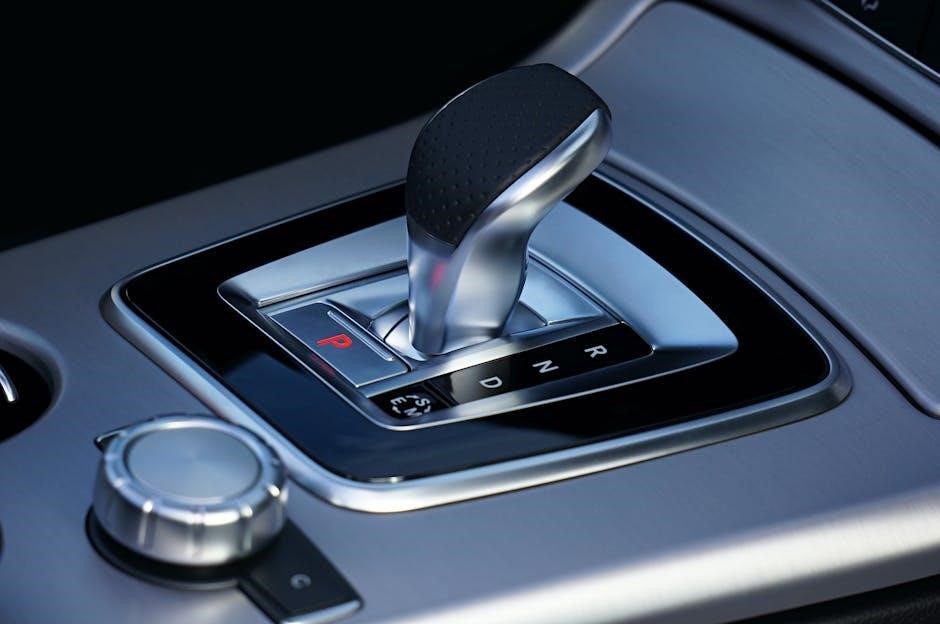
Common Mistakes and How to Avoid Them
Avoid common pitfalls in manual driving. Learn to prevent stalling‚ recognize clutch riding‚ and master smooth transitions. Our guide provides practical tips to navigate challenges and build confident driving habits.
Stalling the Engine: Causes and Prevention
Stalling is a frequent frustration for new manual drivers. It typically occurs due to releasing the clutch too quickly without enough gas. Prevent stalls by mastering clutch control‚ finding the “friction point‚” and coordinating gas and clutch. Practice smooth starts on level ground first.
Listen to the engine; a low rumble indicates a stall is imminent. Press the clutch in immediately to prevent it. With practice‚ you’ll instinctively balance clutch and gas‚ eliminating stalls. Remember handbrake if standstill on an inclined road.
Consistent practice builds muscle memory‚ making smooth starts and preventing stalls a natural part of your driving.
Riding the Clutch: Avoiding Premature Wear
“Riding the clutch‚” or partially engaging it while driving‚ causes excessive wear. This happens when resting your foot on the clutch pedal instead of fully releasing it. This constant friction generates heat and wears down the clutch disc prematurely‚ leading to costly repairs.
To avoid riding the clutch‚ fully release the pedal after each gear change. Keep your foot away from the clutch unless actively shifting. Be mindful of this habit‚ especially in stop-and-go traffic. Develop the muscle memory of completely disengaging after shifting.
Proper clutch technique extends its lifespan and prevents slippage. Make sure to fully release the clutch pedal whenever possible to maintain a healthy clutch.
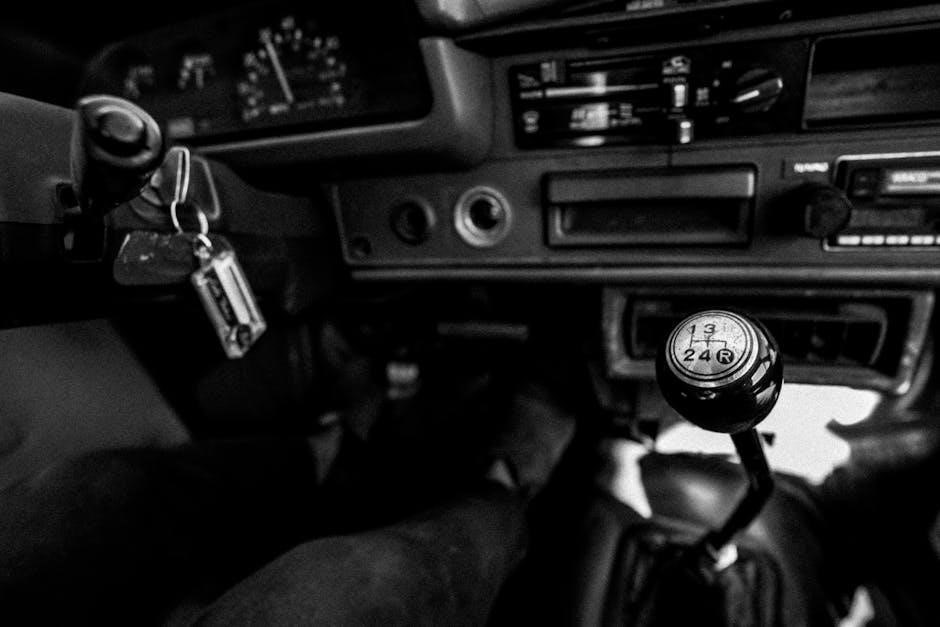
Safety Considerations
Prioritize safety during manual driving lessons by practicing in controlled environments. Understand the tachometer’s role to prevent engine damage. Defensive driving techniques are crucial for safe manual transmission operation‚ especially for novices.
Practicing in a Safe and Controlled Environment
When learning to drive a manual transmission‚ selecting a safe and controlled environment is paramount. Start in an empty parking lot or a quiet‚ residential street with minimal traffic. This allows you to focus on mastering the clutch‚ gear changes‚ and coordination of pedals without the added pressure of navigating busy roads.
Practicing in such an area reduces the risk of accidents and allows you to build confidence at your own pace. Familiarize yourself with the car’s controls‚ including the clutch‚ gas‚ and brake pedals‚ before venturing into more challenging driving situations. A safe environment fosters a more relaxed and effective learning experience.
Understanding the Role of the Tachometer
The tachometer is a crucial instrument in a manual transmission vehicle‚ displaying the engine’s revolutions per minute (RPM). Observing the tachometer helps you determine the optimal time to shift gears‚ preventing over-revving and potential engine damage. Generally‚ shifting between 2‚500 and 3‚000 RPM ensures efficient performance and fuel economy.
Familiarize yourself with your car’s specific RPM ranges for each gear. Listening to the engine’s sound in conjunction with monitoring the tachometer will enhance your shifting accuracy. As you gain experience‚ you’ll develop a feel for the appropriate shift points‚ making your driving smoother and more controlled.
